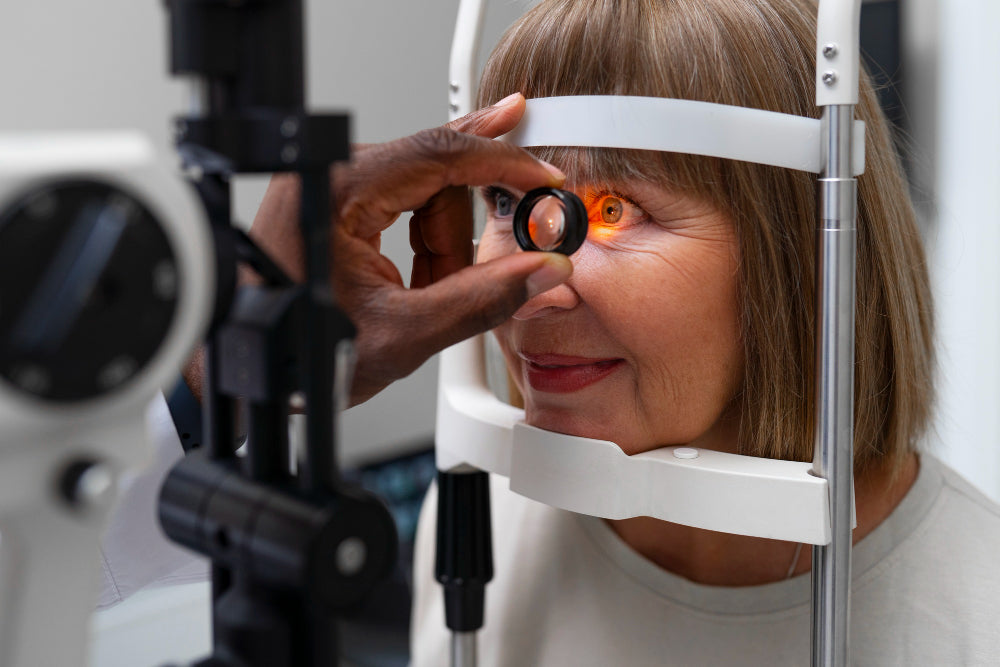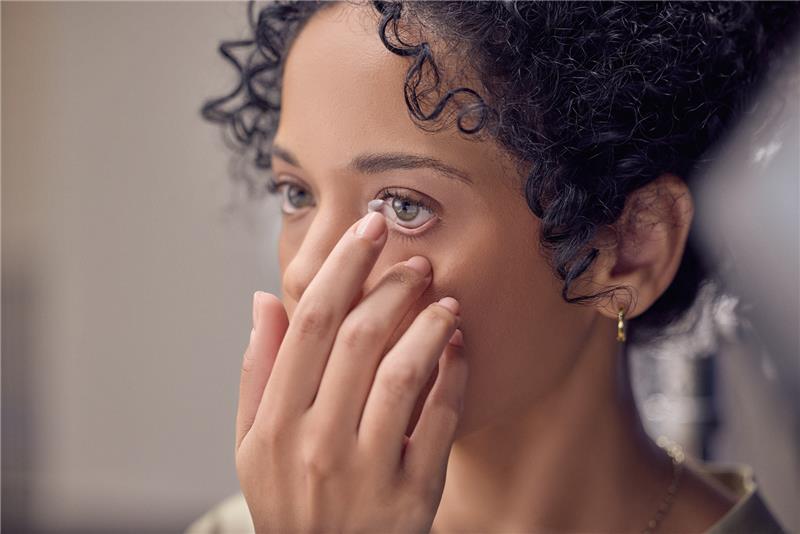Many people you see walking down the street today are wearing glasses. In a family of five in the US, there is a good chance that at least two or three family members require visual correction.
The history of glasses is a testament to human ingenuity: a collective effort of many. While Salvino D'Armate is credited with inventing the first functioning pair of glasses, it is important to remember the contributions of all who came before and after him.
Let's “take a look” at the rich history of eyeglasses (the bad puns just write themselves!). We will discover when glasses were first invented and who made the first pair of glasses, and examine the years of struggle and dedication behind the invention of the modern eyeglasses we enjoy today.
History Of Eyeglasses

Who would have thought that two convex lenses in a wooden setting with a shaft holding them together with the help of a rivet would become a necessity of life for so many?
It makes one contemplate how much our world has evolved, how much humankind has accomplished over time, and how much there is yet to be discovered.
Many believe that the best way to lead a prosperous future is to examine the past to see how things were done and what impact those things created.
As humans, we believe in learning from the past, living in the present, and looking forward to the future. Just for fun let's travel back in time to chronicle the inventions that led up to that first pair of glasses as we know them today.
The creation of eyewear is often attributed to an Arabian scientist named Alhazen. He was a mathematician who laid the foundation for physiological optics.
The invention of modern eyeglasses, which we enjoy today, was not the result of a single individual's effort, but rather the culmination of countless years of dedication and the contributions of many individuals.
Early Development: Who Invented Eyeglasses?
It began in ancient times, before the 13th century AD. Romans used lenses to improve vision and water-filled glass spheres to magnify images.
But even before that, in the 9th century AD an Arabian scientist named Abbas Ibn Firnas and Ibn al-Haytham explored the uses of polished lenses to improve vision.
Glass blowers in Venice are credited with making the first-ever glass lenses with frames around them. In the 12th century AD, transparent stones were used in China to magnify text for reading purposes.
In the 13th century, Italian monks crafted a semi-spherical lens from rock crystal and quartz, capable of magnifying text when placed on paper. This innovation significantly improved the lives of those suffering from presbyopia, a condition that makes it difficult to focus on close objects as one ages.
The Making Of Eyeglasses: First Glasses In History
It is believed that Salvino D'Armati made the first functional pair of eyeglasses in Italy in the 13th century AD.
Between 1284 and the 1400s, Venice, Mecca, and Italy founded a guild for crystal workers and eyeglass lenses.
Around the 14th century, glasses became more popular and common in Italy as more people opted to read the productions of the printing press invented by Jonathan Gutenberg.
Nicholas of Cuba created glasses with concave lenses that treated myopia, or nearsightedness.
The status of eyeglasses elevated even further in London in 1665 when The London Gazette was established and started producing newspapers.
At that time, glasses were not fitted to the face; one had to hold onto them to use them. As we know them now, glasses were not introduced until the 18th century.
In the 16th century, nose spectacles became popular as every scholar, mathematician, and educated person wore them on the bridge of the nose. “Nose glasses” became a sign that a person was knowledgeable.
Enter Bifocals
In 1784, Benjamin Franklin is credited with the invention of bifocals, having grown tired of constantly switching between glasses for distance and near vision tasks.
Benjamin Franklin cut his distance and near glasses into two lenses and combined the pieces into one glass with an abrupt shift in vision between the upper and lower lenses.
In the 19th century, a French eye care professional, Louis de Wecker, improved the prototype by fusing the upper and lower sections of the glass lens.
Continuing down that path, Peter Williams introduced the trifocal lens, which he credited to Benjamin Franklin.
In the 18th century, Sir George Airy created cylindrical lenses(1825), designed to treat astigmatism.
In 1936, Edwin H. Land created polarized lenses, and since then, many lenses have been introduced to help us in our everyday routines. Lenses now treat myopia, or nearsightedness; hyperopia, or farsightedness; astigmatism, or line focus. The first modern progressive multifocals, the Varilux lens, was developed by Bernard Maitenaz and patented in 1953. It was brought to market by the company that would become Essilor in 1959. Since then, modern lenses that treat presbyopia, the need for magnification that comes with aging, have been available.
Today’s Glasses
Today's eyeglass frames, with which we are more familiar, were first introduced in the 18th century to enhance comfort and wearability. Ear or temple pieces were added to glasses to help keep them in position and prevent them from slipping down one’s nose.
The first of these eyeglasses as we know them today was produced by a London optician named Edward Scarlet in 1728.
Initially, glasses were made of glass. Now, they are made predominantly of plastic, polycarbonate, or some other variation of high-index material. By the 1900s, Dr. John Borsch fused the first decent-looking, lighter, more attractive bifocals.
These thin, durable, and lighter weight lenses were easier to wear and provided nearly the same quality of vision as the heavier glass lenses. Now, we see different designs, colors, and shapes of lenses and choose the style that enhances our appearance and is the most functional for our vision and lifestyle.
Perception of Eyeglasses

Glasses symbolized literature, the arts, and peak fashion in the 1800s. In London, they were considered a luxury so expensive that only upper-class people could buy them.
Over time, glasses became associated with old age and began to lose some of their charm. People may have viewed glasses as a sign of old age and weakness.
However, glasses are widely considered to be the fourth most important discovery in humankind's history. Glasses allow people to see correctly at all points in their lives, thus allowing for economic prosperity and the ability to enjoy life’s most precious moments visually.
Today, eyeglasses are considered to be a symbol of support, health, strength, knowledge, fashion, and individuality.
Conclusion
The history of glasses is a fascinating journey through time. From the use of magnifying stones to the invention of the first bifocals and the development of Varilux lenses, it's clear that economic prosperity is closely linked to our ability to see clearly.
Tragically, uncorrected refractive error, ie, the need for glasses remains the world’s number one cause of blindness. At Vision Source Rio, we are working to eradicate this unnecessary situation by partnering with Optometry Giving Sight, a non-profit dedicated to reaching disadvantaged people worldwide with eye exams and eyeglasses. You can join us in giving the gift of sight to the entire world.You can join us in giving the gift of sight to the entire world. Donate to Optometry Giving Sight now.
At Vision Source Rio, our mission is to help entire families look, see, and feel their best in a caring and professional environment. A large part of this mission is filled by providing the best possible eye exam experience coupled with the best possible combination of frames and lenses specifically suited to your individual style.
We have glasses to fit every visual need, personality, and budget. We utilize state-of-the-art exam techniques coupled with state-of-the-art glasses to get you functioning at your highest level without compromising your individuality. Why not visit us today?
Explore More:
- Routine Eye Exam Vs Comprehensive Eye Exam
- What is the Pressure Behind the Eyes? How to Maintain it?
- Can High Blood Pressure Cause Flashing Lights in the Eyes?





